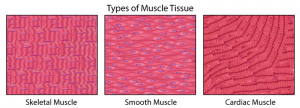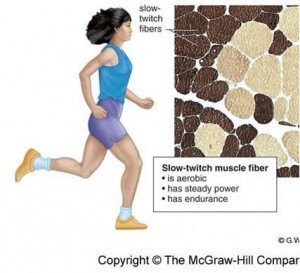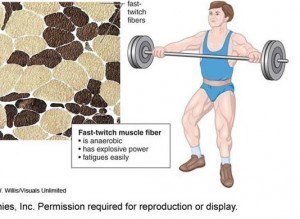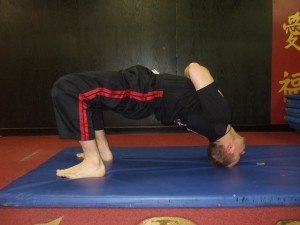If you’re reading my articles, then you are likely either a fitness novice looking for a place to start, or an athlete seeking an edge in your athletic endeavors. If I’m going to be training you, I will now explicitly state what I have implied in several of my articles: truly effective training is a much deeper rabbit hole than just knowing what exercises to do and the proper form for said exercises.
A major tenet of training, I’ve found, is setting concrete, realistic goals for the “point” you are at currently at: if you’re just beginning to run, winning a marathon is not a realistic goal for at least the first year of training. In contrast, “increasing cardiovascular endurance” or “running a mile” is a very realistic and achievable goal. And once you have achieved one of your goals, you will be both physically capable of achieving the next one, and having the psychological confidence to do so.
And this concept of setting goals brings me to the title of the article—for increasing strength and increasing endurance are goals that are both achievable for beginners, but are mutually exclusive for elite level athletes.
Why Is This The Case?

This is because there are different types of skeletal muscle fibers that pertain to different kinds of physical exertion. Training for maximal strength will lead to you developing more of one kind than the other, and inversely training for endurance will lead to your muscles predominantly being composed of the other. More specifically, and greatly simplified, there are three types of skeletal muscle fibers, and they are as follows:
Red muscle, or slow oxidative, is a type of muscle fiber that slowly contracts. This type of muscle slowly produces lactic acid (the stuff that causes “the burn”, to tell you when you’re over-exerting yourself). You can observe “red muscle” by looking at a cooked chicken—this is the dark meat. It is found in the chicken’s legs for obvious reasons: the chicken spends most of its day walking around, thus needing that stamina. This is the type of muscle fiber that is found in endurance athletes such as marathoners.
Note that muscular endurance (i.e. your legs not getting tired in a marathon) corroborates directly with cardiovascular endurance. The heart utilizes a separate type of muscle tissue and as such will not be discussed here.

Fast Glycolytic, or “white muscle” is, as one might expect by contrasting the previous paragraph, a muscle fiber that quickly and powerfully contracts in a bout of maximal exertion. In accordance with its power, these muscles quickly and abundantly produce lactic acid, a hormone that acts in a positive feedback reaction, i.e. your body telling you to take it easy or you’ll tear something. This type of muscle is found in any athlete that needs a quick burst of power-sprinters, Olympic weightlifters, ring gymnasts, etc. To return to the chicken comparison, this is the white meat, predominantly found in the breast and wings, as the chicken cannot sustain flight, and has no need to—just a quick sprint to get away from predators.

And finally, fast oxidative, or intermediate fibers, contract rapidly and have a moderate rate of fatigue. They are red and aerobic, rather than anaerobic, and serve as something of a “jack of all trades” of muscle fibers. An amateur athlete that trains in both strength and endurance without seeking to excel in either will have an abundance of these.
How To Train For Each
Training in one way or another will cause your body to generate one of the types of skeletal muscle tissue, and you cannot have a maximal degree of all three. Have you ever see a marathoner step into the weight room and snatch 400 pounds over his head? Me neither.
Despite that, you would not say that any person with a high degree of any of the three kinds is “unfit.” It is impossible to be a world class athlete in all three, but it is quite possible to be above average in all three. To cite one example, an Olympic class men’s gymnast, who is obviously incredibly dexterous and has a high degree of endurance, is also capable of deadlifting twice his bodyweight. While that bodyweight is not particularly heavy, an objective viewer should still be impressed with a small man deadlifting 300 pounds or so.
Power
A regimen for raw muscular power would be one of high weights and low repetitions. It would also be almost entirely made of compound lifts. A sample regimen for this would be along the lines of (all lifts are a one rep max or one set of no more than 3 repetitions):
- Deadlift
- Squat
- Bench Press
- Overhead Press
- Weighted Pull-up (preferably with a chain belt rather than clencing a dumbbell between your thighs)
- Dragon flag, Roman Chair sit-up, or some other heavy abdominal exercise
This is a fairly standard strength routine. Note that this routine is simple and only has six exercises. If you have a million exercises in your routine, you’re doing it wrong. While there are more esoteric exercises that are very effective for strength training-such as high level work with gymnastics rings-these exercises are much simpler and more accessible for the average man, and will likely be your starting point.

Endurance
As one would expect in contrast, an endurance workout has high repetitions and lower weights. Also in contrast is the greater variety of ways that muscular endurance can be trained—you can quite easily take the routine cited in the Power section and make it an endurance routine by dropping 100 pounds from each lift and adding 5 sets of 5 to each. However, I dislike doing high repetitions of weights-there are some experts, notably Pavel Tsatsouline, who claim it has a higher risk of injury.
Instead I will use my own endurance routine, done on a separate day from the strength routine, as a sample:
- Two sets of one handed pushups, one for each hand, to the highest number I can do them with proper form
- Two sets of pistol squats, one for each leg, again to the highest number I can do them with proper form
- Horse stance for the longest time I can go
- Floor-To-Stand bridges for repetitions (I try not to do as many of these as I do the other exercises, to avoid any spinal injury)
- Neck bridges for time
- V-Sits for time
- 2 sets of “Hand-And-A-Half” pull-ups, one for each hand, for as many repetitions as possible
- A set of handstand pushups for as many repetitions as I can

In addition to these, I also do extensive cardiovascular training as well, and there’s no reason you shouldn’t. Running, martial arts practice, and swimming help provide endurance, the latter two of which also train the muscles to have stamina under a different set of auspices as well.
Regardless of the specific exercises you choose for each goal, the theoretical knowledge I have provided, as well as the sample routines, should see you on your way
Read More: The Ultimate Guide To Building Muscle: Genetics And Training
The body becomes better at whatever you do a lot. That’s really all most of us need to know.
Try to identify your muscle category and train to that type.
I tried jogging for a few years (hey, I was raised in the eighties, my parents thought it was cool) before I finally realized that my body doesn’t want to run slowly. Epiphany! Now I do explosive exercises: sprints, box jumps, burpees, suicides, a whole range of plyos, plus a weekly game of soccer, and of course the weight room.
People have commented that I shouldn’t be sprinting up staircases at age forty. I can’t help it. It’s what my body is designed for.
Finding these things out about yourself should be an essential part of neomasculinity.
My Dad made me jog (also 1980s). I just ended up with swollen ankles as it turns out I had flat feet.
When I got older I refused to run because of that experience. Thankfully that refusal I think saved my knees. All the big runners (including my parents) I know knees started falling apart in their late 40s.
Knee problems is why, save for sports like soccer, I refuse to jog and now I just ride bicycles and swim.
I use a stationary bike at a high resistance setting for leg workouts. I find that my knees aren’t bothered at all.
H- Hit up a pool Bro… Like I was telling Bucky, you get all the benefits of endurance/cardio/fat burning, etc. without putting pressure on any joints.
[Michael Phelps consumes 12,000 calories per day yet remains cut.]
12000 calories….does partly explain the weed. After all, it IS 12000 calories. The man does need a stimulus to eat and recover all that lost energy. Can’t blame him.
i hate running. i always tell people the main reason to run is if you enjoy running (and it isn’t causing injuries). if you want to cut fat, build lean muscle, and generally be more fit there are far better options.
Be sure to distinguish between jogging and sprinting. They have totally different effects upon the body.
oh yeah. sprinting is great for ripping fat off your body. seems to build leg strength too. i had to do wind sprints to train for a specific PT test at one point in my life. still think sprinting is too high-risk for most people, though. personally i can’t motivate myself to sprint without a specific time i have to beat for a specific reason.
Sprinting in loose sand will rip the glutes right off your ass. Try it and see. You won’t be able to sit the next day.
running on the sand is much better all around, if you have a beach near you. works the muscles better, as you noted, and reduces impact.
True enough. It would be very difficult to sit without glutes.
Agreed
In that case, full court basketball (keep the players down to a minimum, so there is more running and less passing involved) would be the best activity for you, if you can get hold of an empty gym. Watch out for ankle-breakers!
Bucky- Try swimming dude… You get all the benefits of cardio/fat burning without putting excess pressure on any joints.
Michael Phelps pounds down 12,000 calories per day yet remains cut.
i don’t know a lot about training by swimming, but it seems to me that to get michael phelps like results, you’d have to train like him. that is, you probably can get ripped and powerful from swimming, but weight training seems like a much faster, more efficient way. judging from his UA commercial, michael phelps himself does a fair amount of weight training.
Interesting. Please can you give some pointers as to how to identify my muscle type.
“Suicides”? Not sure I like the sound of that …
I’m not a trainer, so cannot advise, but after pursuing a wide range of exercises you should feel yourself naturally gravitating towards a few particular movements. They’ll probably be the ones you like to do the most. Listen to your body.
Thanks, that sounds logical to me.
What people told you shouldn’t sprint up staircases? People sitting in armchairs watching TV eating Cheetos and drinking Pepsi?
LOL, they were probably just jealous. I like taking the subway because you can sprint up the stairs at the end while the cattle take twice as long standing on the escalator.
The “power-lifting” exercises mentioned in the above article ironically build strength rather than power (i.e. the ability to move a heavy object quickly).
Also:
Not true. Changing up your routine regularly is a key part of avoiding imbalances and injury.
Na, you just got suckered in by Crossfit.
What’s the best way to lose winter waistline/belly fat without losing too much muscle in the process? I’ve limited/monitored caloric intake along with cardio to do it before a long time ago. Just wondering if that’s still the best way to do it.
I know the best way is to not get it in the first place but after a couple rounds of surgery and antibiotics over the winter my maintenance routine got shot to hell. My jeans are tight with about an inch or so of belly fat overhang, it pisses me off but fortunately this is the only area I have any fat, so I need to get into a lose fat routine before I can go back to maintenance mode.
Thanks for any suggestions.
My rate of fat loss improved when I shifted from heavy cardio to much more in the way of free weights using a low-rep-high-weight program. After a while I started to gain weight back (about 15 lbs) while my clothes fit better. It was muscle gain.
I have managed to lose the excessive fat everywhere except for my gut (though it is smaller). This is due in part to just being cursed by genetics: I had good fat loss except from the area I wanted it the most.
Yeah I have been gaining muscle too but not losing the gut. It seems to be the hardest to get rid of. I have no fat anywhere else. In another month or so I’ll have the pool opened back up, HIIT style heavy swimming and resistance type water exercises always gave me a good warm weather workout.
My back is blown out so I have to be careful around the weights. The pull-up bar is a godsend though.
It seems to be a common complaint, especially men over 35. The gut just won’t go. If you do good core workout, you even look fatter as you get fitter.
On the workout forums I have come across men who state that taking CLA has helped (if taken over a long term). I have come across others that state CLA was useless.
Take a look at a book called The Hardness Factor. That your sexuality is linked with your heart is one of the major tenements of this book. Regardless, the daily walks of about 5 miles for 6 weeks, daily planks, axe squats, essentially makes it hard for a gut to stay. I highly recommend the plank. Another crazy book which has helped a few posters is Convict Conditioning. Give both a look. Hopefully one of them helps.
Edit: The regiment in The Hardness Factor is lite enough that you can keep your weight gain regiment going. Even decide to eat more food so the muscle stays as you will be burning a lot of calories.
Will do, thanks for the suggestions.
Solution is easy: don’t get a gut to begin with. Cut out the beer, potatoes, and white rice, and you’re truly two-thirds of the way there.
We Americans don’t listen to our bodies enough. Hold back on carbs until your body shakes you by the lapels and screams for them. I keep whole-wheat pasta on hand for those moments. Listen to your body, but don’t let it own you.
You’re preaching to the choir here man. Go to the top of this thread and see what I initially posted.
I’m in my mid 30’s too. You’re right about retaining stubborn bits of belly blubber even with all the working out.
Was a problem for me too.
I’ve found committing a few days a week to Intermittent Fasting (IF) seems to torch belly fat over time while maintaining a quality workload.
Might want to find out if adding Intermittent Fasting to your routine could work for you.
http://jamesclear.com/the-beginners-guide-to-intermittent-fasting
I cut way back on carbs and sugar a year ago. Made a huge difference in my weight and energy levels. I must admit I am weak willed when in comes to beer / wine, which is likely the source of my current gut fat issue.
sounds very gay.
Lmao!! Aren’t you a try hard!! Hardness Factor equals gay?! I thought faggot, sucking on a dick, or gay, meant gay, but okay. BS and sexually insecure. Go find a blip, meme, hashtag, safe space, cis to play with kid.
Okay, sorry, Frank.
My two cents for your situ: When I started attending a body-weight plyos class (45 punishing minutes of HIIT taught by a crazy woman) I saw an immediate difference in my abdomen. When I say immediate, I mean in literally two days. I have a four-pack now for the first time in my life. Swimming is great but you might need the benefits of gravity to achieve the specific thing that you’re looking for.
touch a nerve?
Nope. Just revealed enough to note you are wasting your time and mine. No problem with discussing anything with anyone. You are very childish in how you choose to communicate and only seem to derive anything from goading a response. Must be quite sad hoping someone notices you enough to care to respond.
zzzzzzzzzzzzzzzzż
Regimen
The last few pounds are the hardest, and require the most discipline, you simply have to stay in a slight calorie deficit – there’s no way around it without drugs. This requires iron will when it comes to diet, there’s no such thing as a cheat meal at that point, eat like a monk, do low volume, heavy weight and train no more than 3 or if you’re an advanced trainee maybe 4 times a week. Some people have great success with TKD, where you consume the bulk of your carbs before and after you train then stick to high protein for the rest of the day, but it doesn’t work for everyone
Ditto. Just drop the treadmill/elliptical. Completely useless. More muscle means you burn more fat just sitting and sleeping! I have also started to incorporate more endurance body weight style routines (as one book linked to here is all about).
When you are doing push-ups, pull-ups, burpees, and all manner of body weight LIFTING endurance exercises (as this article is an awesome example of), I have found my core is not just tighter, but flatter and the fat is slowly… burning away. Mind you, I am in my early 40s and trying to get under 15% to 10% or less.
If I am actually able to do it, I will do up an article on how I did it.
In my early 40s, and already a fairly strict nutrition guy, I am slowly realizing that I am going to have to go nazi on my diet. There is just no room for extra carbs when you don’t need them at my age. I was OK bodyfat/ab wise right up to 39. After 40… keeping the gut in and the belly fat low is now a daily battle.
I found last year that when I actually fasted (not intermittent), I lost a lot of BF. I am talking 8 to 10 or 12 hrs with no food or drink for a week or even a month in one go. Have a good breakfast. Eat a moderate supper. (Don’t gorge over 2 meals as it will do no good and your stomach won’t take it.)
Yes… it is possible to go 10 to 12 hours without food or drink. You won’t die. (in fact, it is probably far closer to how our ancestors actually lived on a daily basis when you think about it.) I started slowly by only doing 2 days on, 2 days off and increased to a 5 days on, weekend off, then a full week, then two weeks.
You will also lose muscle, but a lot less muscle than I expected. Overall I think I lost 15 lbs one time doing this and only 1/2 of it was muscle. I was leaner and just felt amazing once I started to eat three solid meals again. My stomach actually felt empty and colon cleansed without the need for any drugs or other methods that need not be mentioned here.
Anyway… here is a good video you might find informative. It breaks down the actual BF percentages for guys at different fitness levels.
20 minute cardio before workout and keep your heart rate below 160, so your muscles don’t enter a catabolic state. As for dieting, keep it simple…1 gram of protein per 1 gram of body weight. Consume under 80 grams of natural occurring fat and you will see results…oh and one other thing don’t skip carbs try eating whole-wheat and stay away from processed food
Someone correct me if I am wrong, aren’t we all born with a set ratio of these muscle fibers and training only makes them more efficient? Like all great sprinters got high fast twitch, all great endo runners got high slow twitch.
As far as I know, that was found to be not true (or rather, partially true).
That came from the same era of medical study that said that the brain doesn’t grow new neurons after becoming an adult. We now know that to be false, but it IS very hard for new neurons to grow.
It’s definitely true that those ratios exist in people who have been training for a long time. And it’s definitely true that people are born with a certain ratio (or at least develop one at an early-ish age). But that ratio can be changed, it’s just very hard.
After doing a bit of research just now, it seems a big factor in determining the ratio is hormones. And as hormones change, so does the ratio. It’s hard to get hormones to change, and after they change, it’ll probably take a while for the muscle fibers to change in response, but it does happen.
My research just now also said that muscle fiber types can partially change/transmute into other types by adopting characteristics of the other types. This isn’t a complete change, but this is the kind of change that would be seen in someone who trains hard in one type without changing how they live their life.
“Use the black as muscle” LOL
Currently training as a fighter and have to say, I love a lot of the recommendations you posted. Keep them coming!
That’s bad ass. Give a shout out to ROK when you make it big.
Of Course!
Great article, Larsen. Thank you for the insight.
Echoing what a lot of other people have been saying here, too – if you’re doing cardio, try to make it zero or as low impact as you can. Save your knees and ankles so you can still live a quality life in your old age.
I would personally recommend Ross Enamait’s Never Gymless as being one of the best ‘go to’ guides for developing above average strength fitness during my past 2 years. Had to tweak a few things as I did find a number of programs too intense for me at the time. But I’d say worth investing in if you’re interested in life long functional fitness.
http://www.amazon.com/Never-Gymless-Excuse-free-System-Fitness/dp/B002KDOLK0
The man on the right in the top picture looks like Dwain Chambers. Chambers got his body by using steroids.
Certainly is him. Still would have been a phenomenal athlete without gear, though perhaps not world class. But yes not an entirely fair comparison photo…
Awesome article. I had known about different muscle fiber types when I was young, but I did not pay much attention to this fact. Once I did and learned how to train for the different fiber types, my strength and size gains dramatically increased.
The only thing I will add is how to use these fiber to make gains in actual physical muscle size.
1) Train intermediate reps and weight range – 5×5’s. A heavy weight is needed to ONLY do five reps each set, but you are still pushing 5 reps and doing 25 repetitions for a single exercise. It’s a lot.
2) #1 gives you a good feel for your heavy weight that you can add to to really hit the power range you speak of. Compound joint movements (squat, bench, deadlift) in the 2 to 4 rep range for only 6 sets. Heavy, heavy, heavy days. This is pure strength.
3) Now go for endurance – 4 to 6 sets in the 8 to 12 rep range. If you did the first two parts correctly, you should be able to lift a HEAVIER weight… for MORE reps for a given exercise.
Example:
Bench press 5×5’s = 150lbs
Strength phase = 190lbs 2 rep max
Endurance = 150 or 160 lbs for 8 to 10 reps
REST
Bench press 5×5’s = 165lbs
Strength phase = 215lbs 2 rep max
Endurance = 165 or 175 lbs for 8 to 10 reps
Lift bigger. Get bigger. Using muscle fiber types to get you there.
Is it safe to assume you practice kung-fu or some other chinese style? Really going to look into your bridging article this week. I also found just learning to do deadlifts properly gave my back an incredible strength and suppleness I never had before. It also helped me with side kicks and the ability to actually hold out a kick far longer than I ever could before.
I’ve been lifting and I’m seeing great results (at this point in my life (37) I lift mainly to look and feel good, not for any sports type goals), but I feel I am not a naturally strong person and I carry plenty of fat still around my mid section. I’m exactly six feet tall, and weigh 210 to 220 depending on “reasons”. I don’t see me ever doing a pull up unless I drastically cut weight. I have a lot of mid section fat and would probably weigh 180ish if I got my body fat real, real low. At what size and weight do pull ups become difficult for the larger man. Surely NFL line backers can’t do pull ups easy? What about a real tall basketball player; can they do pull ups? I don’t know, I might be able to do a pull up if I lost 30 pounds, but at what weight are pull ups out of the question. When I was in High School and weighed around 165, I could do 4 or 5 pull ups (palms out style, I did a bit of gymnastics when younger so it always felt more natural). I guess, to sum up, are pull ups something larger men should be worrying about?
Its about your weight relative to your strength. There isnt a specific weight where no-one can do pullups. Id be very surprised if a professional sportsman couldnt do a pull up.
Its about progression. If you’re miles away, build up your lat pulldown and dumbell row strength. If youre close but not quite able, try negatives (youtube negative rep pull ups).
Its all about progression, most gyms have assisted pullup machines, just use one of them with gradual progressive overload. I weigh 140 but I can do 3 pullups with a 100lb dumbbell hanging off a belt and it only took me a year to get to that level – You got this.
i hate this. training for one sorta kills the other.
Great article, I also try to tell people that the best goal for non athletes is the allrounder. A good combination of noticable muscle tone and endurance. Endurance will also give you the edge in most jobs.
Absolutely the most uninformed and misleading explanation of muscle physiology I have ever seen Do not believe anything this guy writes. He is completely ignorant.